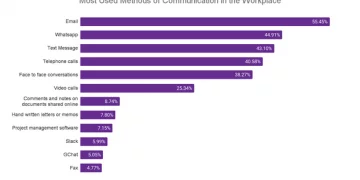
Understanding Workplace Dynamics
Workplace power is the capacity to get someone else to do what you would like them to do.
It is made up of two components — your level of authority and your level of influence.
Leaders use workplace dynamics to get others to take desired actions and hopefully get the results they want.
Your power will vary depending on many factors, including who you are trying to impact, your position, your history and relationship with them and your reputation.
To be an effective leader, you need to understand where power comes from so that you can build your influence strategically.
Social psychologists John French and Bertram Raven studied the different forms of power and identified six sources.
Workplace power is key to success and covered in our assertiveness training!
The 6 Sources Of Workplace Power
1. Legitimate Power
This type of power relates to the position that someone holds in a hierarchy (a classic example would be the army). The power you have is related to your title or role.
Your authority relative to someone else in the hierarchy gives you the right to expect obedience and compliance (details in this authority article).
This is an insecure basis for power, though, as when you lose your title, you lose the associated power.
2. Coercive
This type of power is used when you expect someone to submit to your will, and is typically enforced by punishing people if they do not comply.
People are motivated by fear to avoid the consequences. This type of power usually leads to resentment.
It is worth noting that this is quite different to being assertive (see this article on assertiveness tips for managers).
3. Reward
This power is the other side of the coin to coercive.
It is ‘the carrot’ that you dangle in front of someone to get them to do what you want. Your power comes from your ability to compensate someone for their compliance. This only works while you still can hand out rewards.
This is another fickle form of power, as your power is based on something external, namely your ability to allocate rewards.
Although it may seem better to motivate people with something nice, it can be as ineffective as coercive control. Once the reward is received, there’s no motivation to continue the behaviour, so you have no lasting impact.
4. Expert
This form of influence comes from having a high level of competency, skills and experience and being known for it.
This source of power is based on your personal traits, which means it is something that you and manage and curate yourself.
You can have this type of workplace power no matter what your position in a company.
This is especially true if you have the facts and figures at your fingertips to back up your opinions.
5. Referent
This kind of power is highly personal and is the type of power that a popular person or celebrity has.
Some people are naturally likeable, and this popularity gives them influence. People want to be liked by them and will seek their approval. This means they are more likely to comply with a request from them.
On its own, this isn’t a very effective form of power in the workplace. However, as part of a package, for example, if you are also seen as an expert, it can be potent.
Bill Clinton is the classic example of this. He was a master at building rapport with people incredibly quickly. This was part of an incredibly impactful package that took him to being President of the USA.
6. Informational
This power comes from your ability to control access to information that others need.
People in a position to share or withhold valuable information can use this to gain power over those who don’t.
Again, this is not a very stable form of power, and its use can lead to resentment. People often end up feeling that they are being manipulated rather than influenced when this type of power is routinely used.
These six forms of power are divided into two groups: positional and personal:
Positional power is related to your position in your company or organisation.
(Legitimate, Informational and Reward)
Personal power is available to anyone, no matter what their title.
(Coercive, Referent and Expert)
How Can I Use This To Increase My Workplace Influence?
Real leaders rely on a combination of positional and personal power. They have positional power but augment that by developing personal power.
Understanding this, they usually look to develop across two areas of personal power.
-
Expert Power
As a manager, it can be tricky to build deep expertise, but leaders will, as a minimum, seek to maintain and develop their existing areas of expertise to ensure that they do have an area of specialism.
-
Referent Power
This is a more technical name for networking. Managers seek to build and maintain good relationships across their organisation and beyond.
Being known and liked broadly gives them the ability to reach out to people across the organisation if they need to.
Networking is also covered in our complete assertiveness training guide.
As discussed above, coercive power is precarious, and so sensible leaders do not use this.
Conclusion
Everyone has some power, whether they know this or not.
Understanding the components of workplace power will help you to identify areas where you can most effectively improve your influencing skills.
For more on communication, check out our communication statistics here!
Image credits: Pexels , Unsplash , Unsplash




